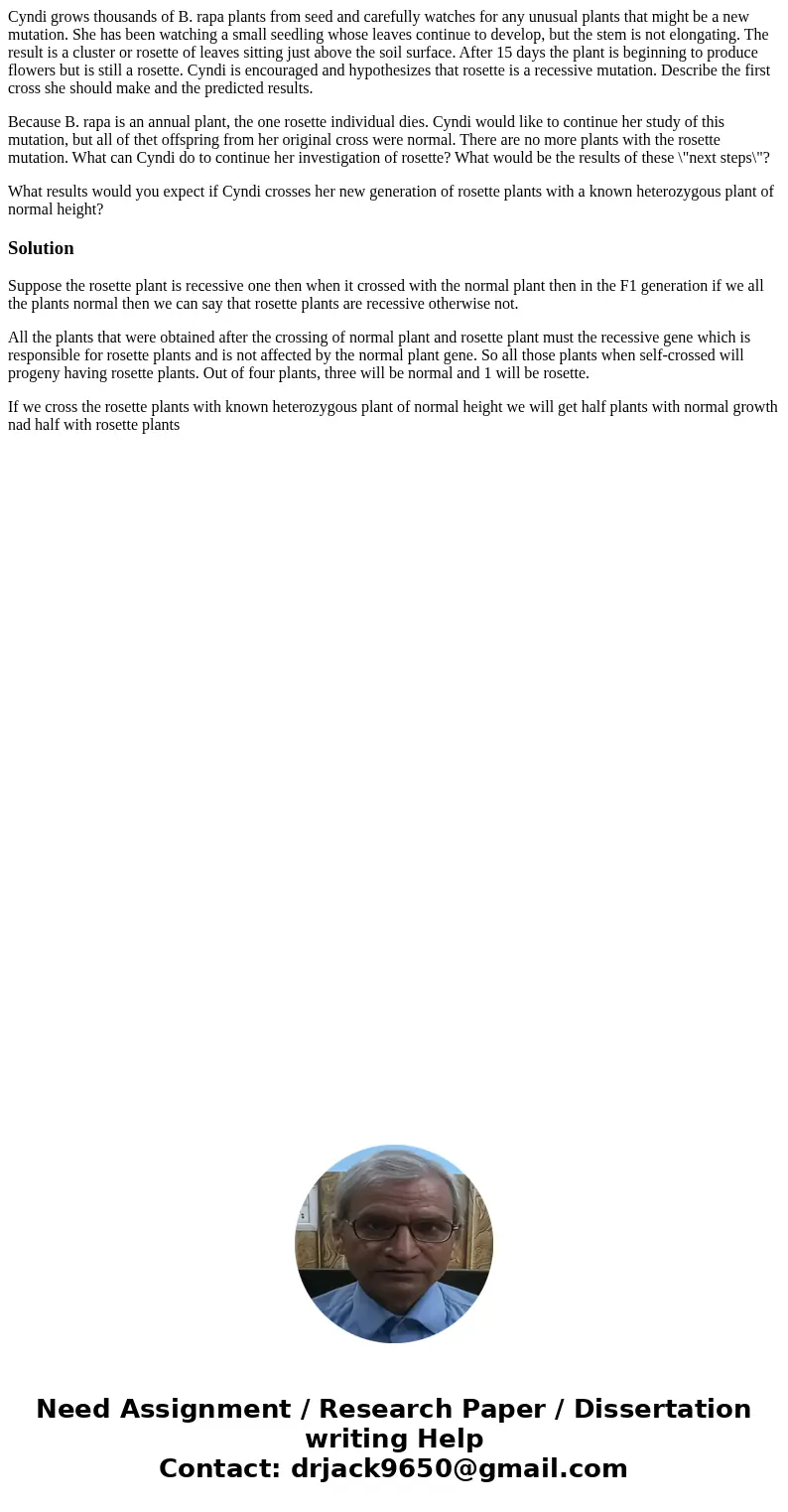Cyndi grows thousands of B rapa plants from seed and careful
Cyndi grows thousands of B. rapa plants from seed and carefully watches for any unusual plants that might be a new mutation. She has been watching a small seedling whose leaves continue to develop, but the stem is not elongating. The result is a cluster or rosette of leaves sitting just above the soil surface. After 15 days the plant is beginning to produce flowers but is still a rosette. Cyndi is encouraged and hypothesizes that rosette is a recessive mutation. Describe the first cross she should make and the predicted results.
Because B. rapa is an annual plant, the one rosette individual dies. Cyndi would like to continue her study of this mutation, but all of thet offspring from her original cross were normal. There are no more plants with the rosette mutation. What can Cyndi do to continue her investigation of rosette? What would be the results of these \"next steps\"?
What results would you expect if Cyndi crosses her new generation of rosette plants with a known heterozygous plant of normal height?
Solution
Suppose the rosette plant is recessive one then when it crossed with the normal plant then in the F1 generation if we all the plants normal then we can say that rosette plants are recessive otherwise not.
All the plants that were obtained after the crossing of normal plant and rosette plant must the recessive gene which is responsible for rosette plants and is not affected by the normal plant gene. So all those plants when self-crossed will progeny having rosette plants. Out of four plants, three will be normal and 1 will be rosette.
If we cross the rosette plants with known heterozygous plant of normal height we will get half plants with normal growth nad half with rosette plants

 Homework Sourse
Homework Sourse